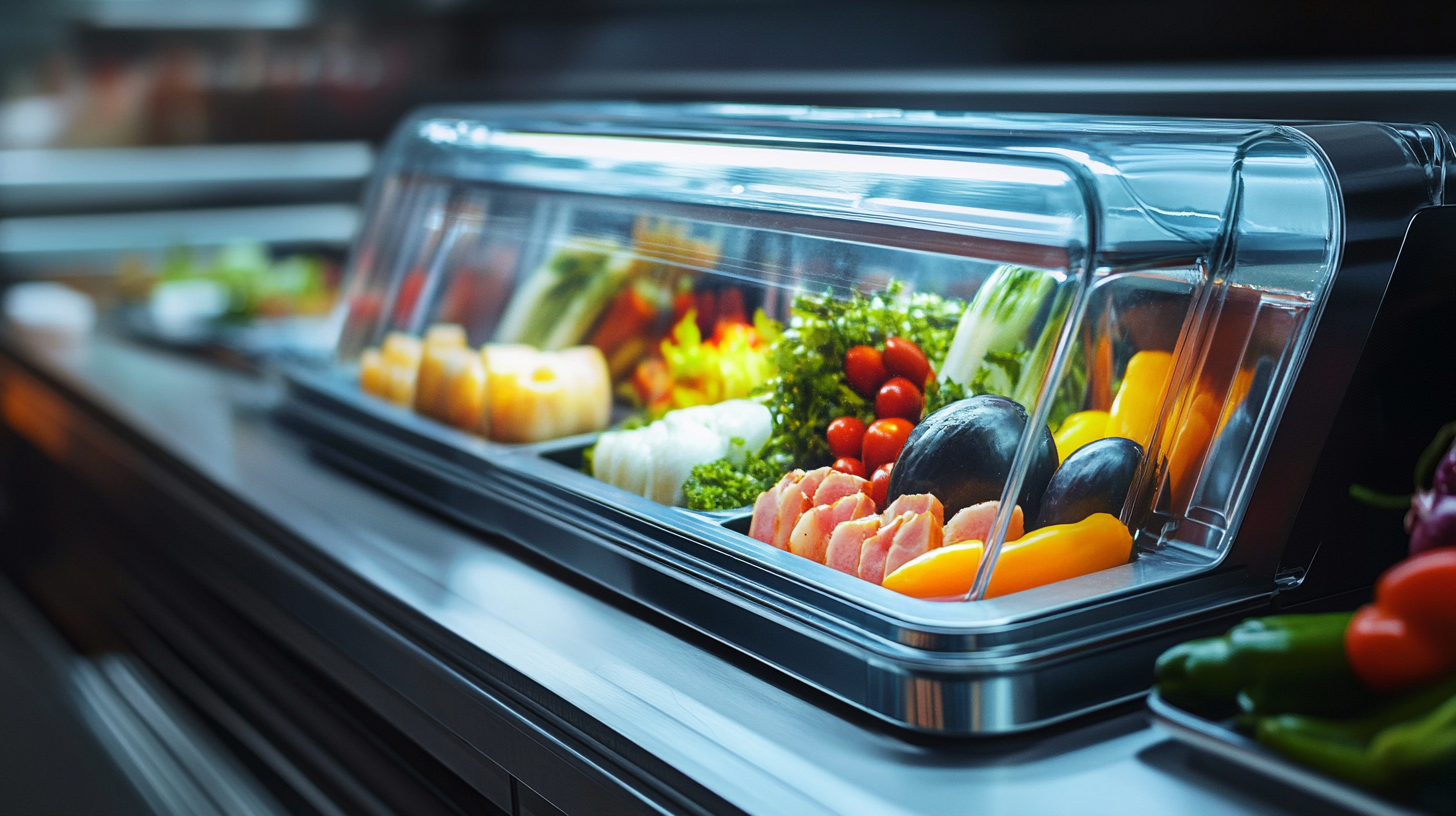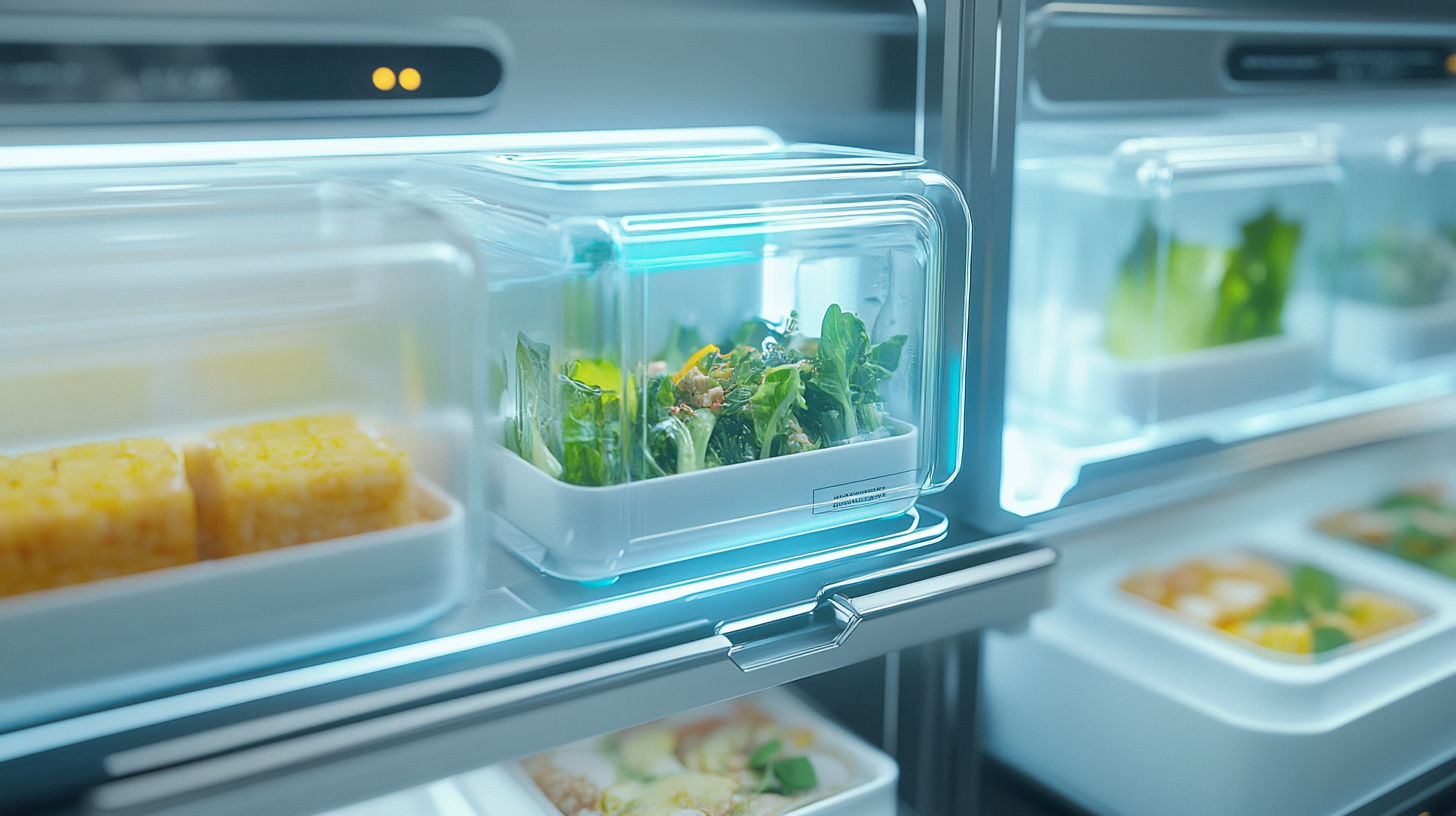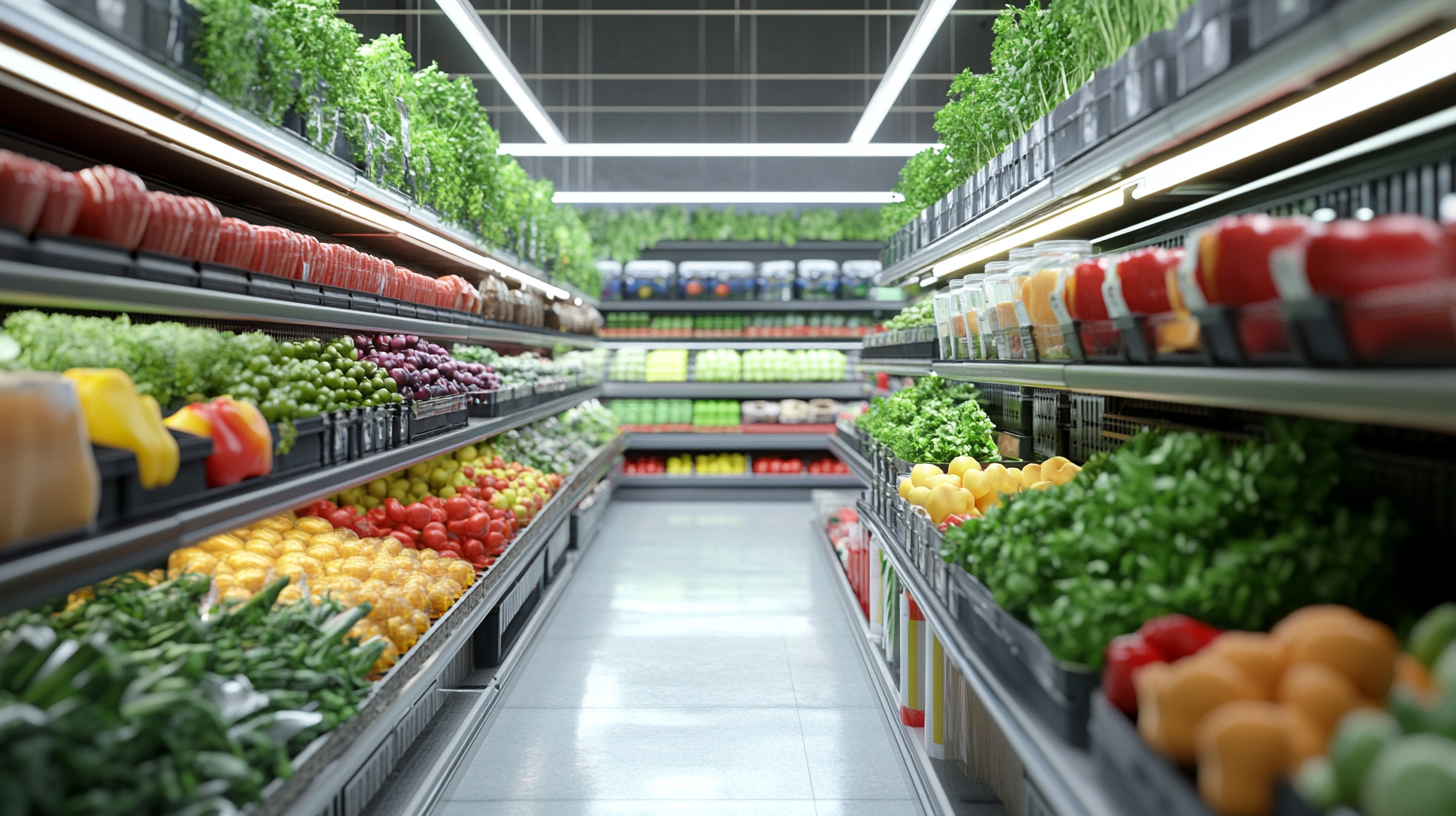ProMach is your partner from start to finish. Our product brands are grouped into distinct business lines that make the most sense to our customers, covering every function of the production line: Filling, Bottling & Capping, Decorative Labeling, Flexibles & Trays, Pharma, Handling & Sterilizing, Labeling & Coding, Robotics & End of Line, and Systems & Integration.
learn moreEmerging Innovations in Food Packaging Equipment for 2025 and Beyond
The food packaging equipment industry is witnessing a transformative wave of innovation driven by the need for sustainability, efficiency, and enhanced safety. According to a report by Research and Markets, the global food packaging market is expected to reach $500 billion by 2025, with a significant portion of this growth attributed to advancements in packaging technologies. As consumer demands evolve towards eco-friendly solutions, food packaging equipment is not only adapting to these trends but also pioneering new methods that reduce waste and improve product shelf life.
Moreover, the Food and Agriculture Organization (FAO) highlights that approximately one-third of the food produced globally is wasted, underscoring the critical role that efficient packaging plays in minimizing spoilage and distribution losses. Innovations such as smart packaging, which utilizes sensors to monitor freshness and temperature, are set to revolutionize the way food is packaged in the coming years. As we look towards 2025 and beyond, the focus on multifunctional food packaging equipment will not only enhance operational efficiencies but also promote sustainability in a rapidly changing market.

Advancements in Sustainable Materials for Food Packaging Solutions
The food packaging industry is undergoing significant transformation as advancements in sustainable materials take center stage. With an increasing awareness of environmental issues, manufacturers are prioritizing the development of eco-friendly packaging solutions that not only protect food but also minimize environmental impact. In 2025 and beyond, innovations in biodegradable materials are expected to revolutionize conventional practices, offering alternatives that decompose naturally without leaving harmful residues. A notable trend in sustainable food packaging is the rise of plant-based materials, which are derived from renewable resources such as corn starch, sugarcane, and even seaweed. These materials provide a viable substitute for traditional plastics, reducing dependency on fossil fuels and lowering carbon footprints. Additionally, advancements in recycling technologies are enabling the creation of closed-loop systems where packaging can be recycled and reused, promoting a circular economy. This progression not only suits the needs of consumers who are increasingly opting for eco-conscious brands but also addresses regulatory pressures for reduced plastic waste. Moreover, innovations like edible packaging and packaging infused with antimicrobial properties are emerging as exciting solutions. Edible films made from ingredients like milk and gelatin can enhance food safety and freshness, while also contributing to waste reduction. This kind of packaging resonates well with the growing consumer trend toward sustainability, reflecting a shift in mindset where packaging is no longer viewed as a mere necessity but as an integral part of the food experience. As we look ahead, the convergence of sustainability and food packaging technology promises to redefine industry standards and consumer expectations alike.

Smart Packaging Technologies: The Future of Food Safety and Freshness
The emergence of smart packaging technologies is poised to revolutionize the food industry, providing manufacturers and consumers with tools that enhance food safety and freshness. By integrating advanced sensors and smart technology into packaging, companies can significantly reduce food waste and extend the shelf life of various products. As the demand for fresh and safe food grows amidst increasing concerns about spoilage, innovations in packaging have become not just beneficial but essential.
Flexible packaging, expected to reach $16.3 billion by 2030, is at the forefront of this transformation. This segment’s growth is driven by smart, sustainable materials designed to preserve food quality while minimizing environmental impact. These advancements facilitate the development of frozen food packaging solutions that keep products safe and fresh, leveraging technology for a sustainable future. The integration of intelligent features alerts consumers to potential spoilage, ensuring that food maintains its quality from the manufacturer to the dinner table.
Moreover, the rise of connected packaging allows brands to engage with consumers in new ways, providing real-time information about product freshness and safety. This interaction not only meets consumer needs but also positions brands to stay competitive in an evolving market landscape. As smart packaging systems continue to evolve, they promise a future where food waste is minimized, safety standards are elevated, and consumer health is prioritized. The food industry is on the brink of a transformation, led by innovative solutions that intertwine technology with sustainability.

Automation and Robotics in Food Packaging Processes
The food packaging industry is on the cusp of a technological revolution, driven largely by advancements in automation and robotics. As we look ahead to 2025 and beyond, these innovations promise to enhance efficiency, reduce costs, and improve product quality across various food sectors. Automated packaging systems are becoming increasingly sophisticated, employing machines that can rapidly adjust to different packaging formats and sizes. This adaptability allows manufacturers to streamline operations, minimizing downtime during production changes and significantly boosting overall productivity.
Robotics plays a pivotal role in this transformation, particularly in areas such as sorting, packing, and palletizing. Collaborative robots, or cobots, are increasingly used in food packaging processes to work alongside human workers, enhancing their capabilities while ensuring safety and precision. These robots can handle a variety of tasks, from placing delicate items in boxes to labeling with exacting precision, which reduces the risk of errors and product damage. Moreover, advancements in machine vision technology enable robots to inspect products for quality assurance at unprecedented speeds, ensuring that only the best reach the consumer.
As sustainability continues to be a driving force in food packaging, automation and robotics are also making strides toward eco-friendliness. Automated systems help reduce waste by optimizing material usage and enabling the use of sustainable packaging solutions. By integrating smart technologies, manufacturers can track their environmental impact in real-time, leading to more responsible and sustainable choices in their packaging processes. The future of food packaging is clearly aligned with these innovative technologies, setting the stage for a more efficient, safe, and environmentally-conscious industry.

Integrating IoT and AI for Enhanced Packaging Efficiency
As we move towards 2025, the integration of Internet of Things (IoT) and Artificial Intelligence (AI) is poised to revolutionize food packaging equipment, enhancing efficiency and sustainability. With the advent of more sophisticated sensor technology and smart packaging solutions, food producers can monitor and manage inventory in real-time. This capability is not only transformative for freshness but also plays a crucial role in minimizing food waste. AI algorithms can analyze data collected from IoT devices to optimize packaging processes, ensuring the right balance between protection, shelf-life, and environmental impact.
Moreover, the healthcare packaging sector is witnessing a significant shift due to the implementation of AI and IoT technologies. Advanced tracking and monitoring systems enable pharmaceutical companies to ensure product integrity and compliance throughout the supply chain. IoT-enabled packages can provide vital information regarding temperature, humidity, and other conditions that affect product quality, facilitating prompt interventions when necessary. This amalgamation not only enhances safety but also bolsters consumer confidence in product reliability.
The trend towards highly integrated dynamic IoT nodes, such as those featured in compact packaging designs, further illustrates the potential of smart technology in food and healthcare applications. These innovations promise an unparalleled blend of features, performance, and energy efficiency, paving the way for a future where packaging is more than just a protective layer—it's a vital component of the supply chain, delivering vital insights and driving efficiency on multiple fronts. As we advance, the fusion of AI, IoT, and innovative packaging will undoubtedly play a pivotal role in shaping the future of how we store and transport food and pharmaceuticals.
Trends in Consumer Preferences Shaping Food Packaging Innovations
As we move towards 2025, consumer preferences are playing a pivotal role in shaping innovations in food packaging equipment. With an increasing focus on sustainability, shoppers are gravitating towards brands that prioritize eco-friendly materials. This shift is driving manufacturers to explore biodegradable options, recyclable materials, and reduced packaging weight, which not only appeal to environmentally conscious consumers but also help brands meet government regulations and target zero-waste initiatives.
Moreover, convenience continues to be a significant factor for today's consumers. Innovations such as resealable packs, easy-to-open designs, and microwave-safe packaging are quickly gaining traction. These features not only enhance the overall user experience but also cater to the fast-paced lifestyles of modern consumers. As a result, food packaging equipment is evolving to incorporate advanced technologies that seamlessly integrate user-friendly functionalities while ensuring product integrity.
Additionally, transparency in food sourcing is becoming a priority for consumers. Packaging that provides clear information about ingredients, nutritional content, and sourcing practices is increasingly demanded. This trend is prompting manufacturers to invest in innovative labeling technologies, such as QR codes and augmented reality features, which allow consumers to access detailed product information easily. As these trends continue to shape the market, food packaging innovations are set to reflect a deeper understanding of consumer needs, ensuring that both functionality and ethics are at the forefront of design.
